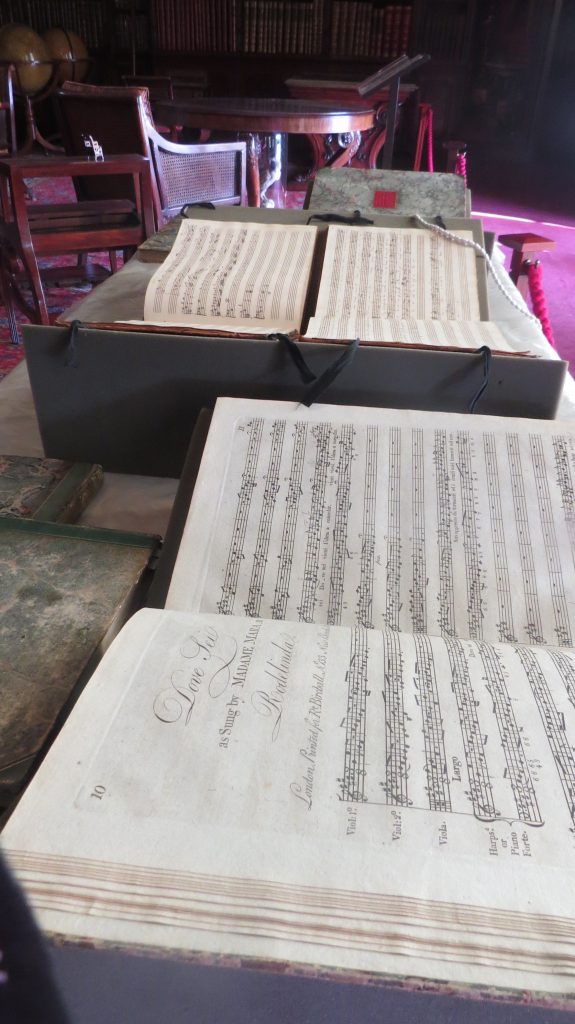Sound Heritage on the road
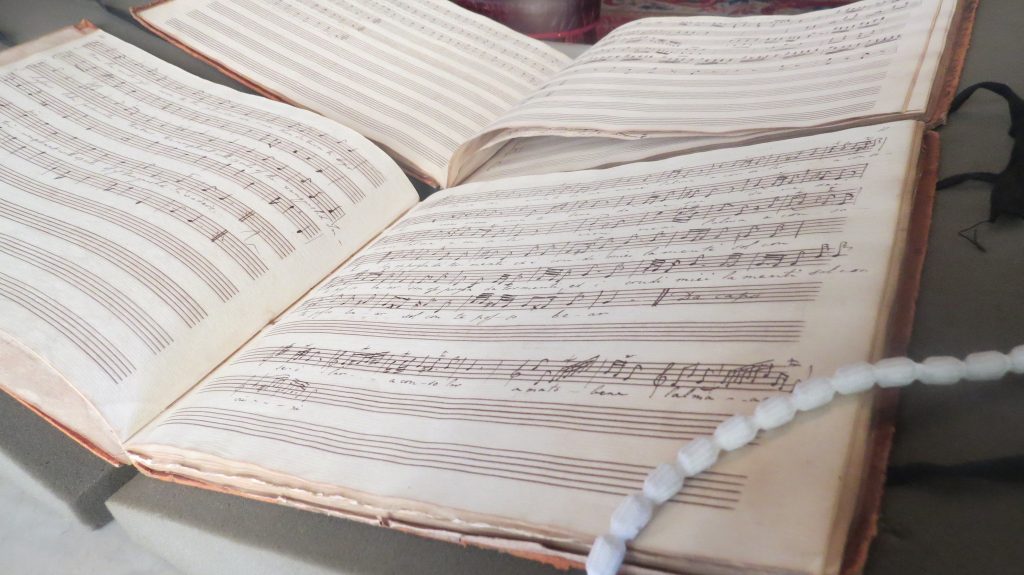
Recent months have been especially busy for the Sound Heritage project, not only with our November study day at Tatton Park, but also with a new venture – Sound Heritage Ireland.
Sound Heritage Ireland
Sound Heritage Ireland is a new initiative convened by Dr Karol Mullaney-Dignam, whose research delves into social, economic and political aspects of music and dance in Irish country houses. The inaugural symposium was funded by the Irish Research Council and the University of Limerick, and held at the Irish World Academy of Music and Dance in early October.
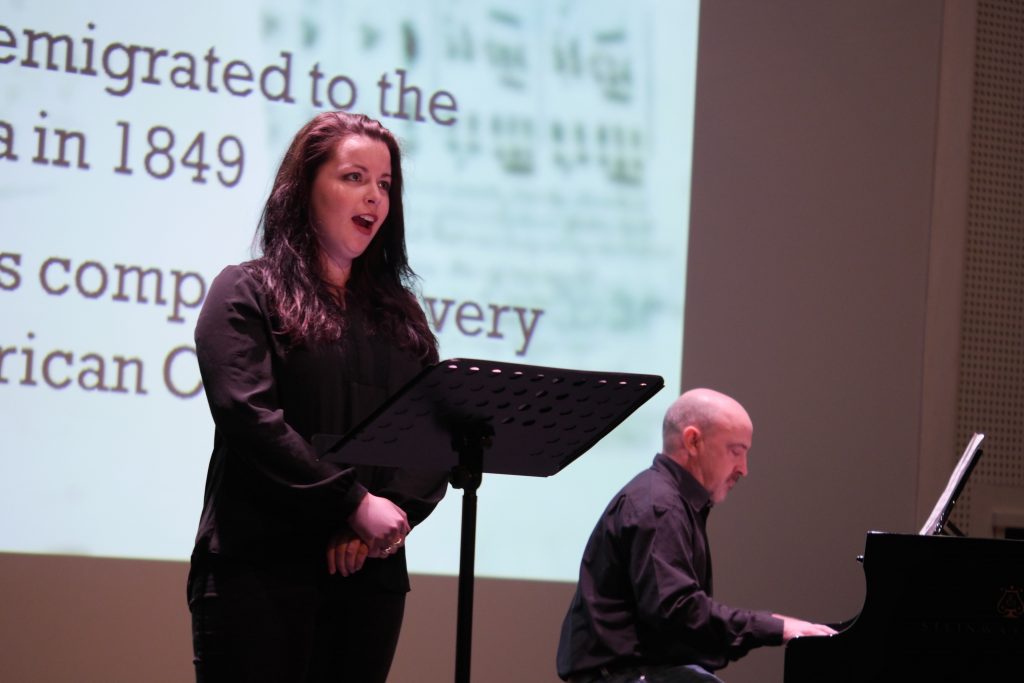
Karol’s opening presentation evoked some of the characteristic aspects of the Irish heritage sector. Working in historic houses of the former landowning and governing classes poses particular challenges, as for some time after political independence these properties were not generally understood as part of the national heritage. Researching and bringing to life their musical past can unlock hidden histories that provide a more rounded perspective. For example, much remains to be learned about the roles of Irish manufacturers and suppliers (of printed music, instruments, performance teaching and other musical services), in country house life. Another potentially rich area involves intersections of traditional music and performance with imported and indigenous elite musical practices. And as for historic houses in the UK, musical research often reveals much about the lives and activities of women, children, servants, and broader networks of tenants and employees who are otherwise neglected in narratives of country house history centred on aristocratic male patrons and their architects.
The day continued with presentations by international Sound Heritage group members. Katrina Faulds showed how dance music offers a way into country house life that cuts across divides of gender, class, and amateur/ professional activity, while I presented the work of the international Sound Heritage project. In the afternoon, Jonathan Wainwright led a lively discussion of future paths and projects for the new Irish group. Limerick PhD student Kara O’Brien has written an excellent report with more details, available from SHI’s website. Thanks to Karol’s enthusiasm and organisation, the day was a tremendous success both in spreading the work of Sound Heritage and in launching a valuable dialogue for Irish academics and heritage sector professionals. For me, it is always helpful to be reminded of the complex webs of similarity and difference that arise when studying and interpreting the musical history of historic houses across geographical and political borders: while some things can seem familiar after years of research on English houses, their meaning in other contexts is often very different, and interpretational strategies need to take this into account.
Study Day at Tatton Park
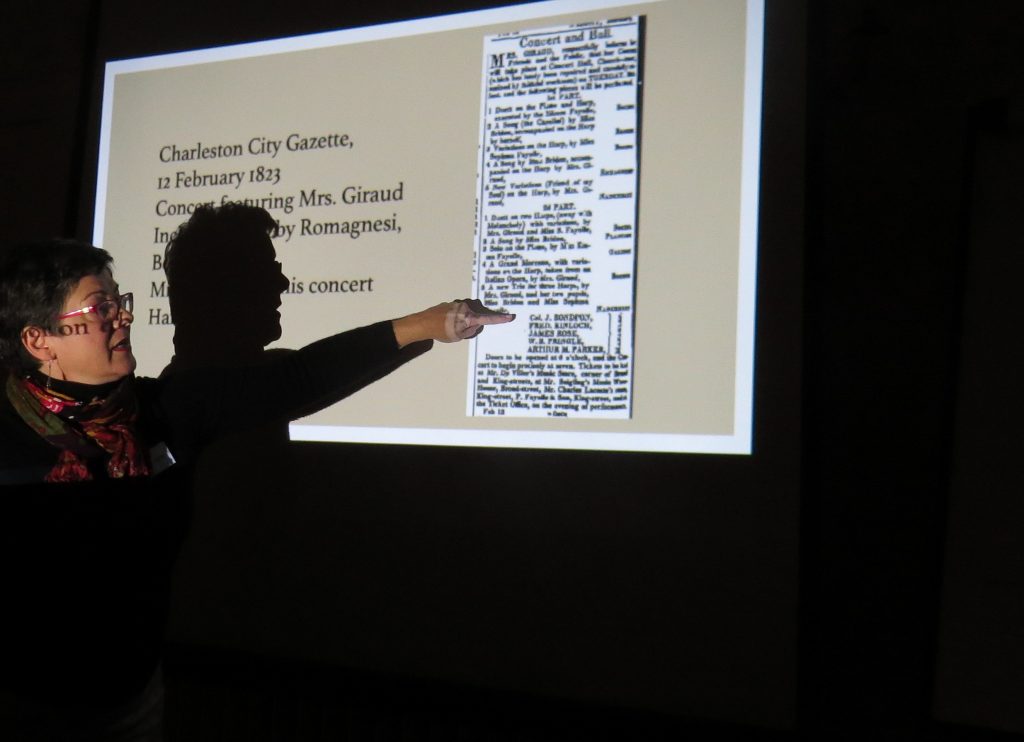
In November Sound Heritage moved North. Our final study day of the year was held at Tatton Park in Cheshire, which has a large music collection from the late 18th and early 19th centuries. There were two further activities in Manchester the day before. The first was an afternoon workshop at the Royal Northern College of Music, led by historical performance specialist Harvey Davies – blogged by Catherine Garry over here. We then piled into cabs for a somewhat spooky ride into a completely dark and deserted Heaton Park, for a marvellous theatre production in the historic house at its centre. We were very lucky that our trip to Tatton Park coincided with the reprise of Whispers of Heaton, a site-specific production premiered in May 2016, which uses theatre and dance to explore the history of Heaton Hall. Director Caroline Clegg generously invited Sound Heritage members to attend the dress rehearsal on the evening before our study day, and this one was of the highlights of the trip for me.
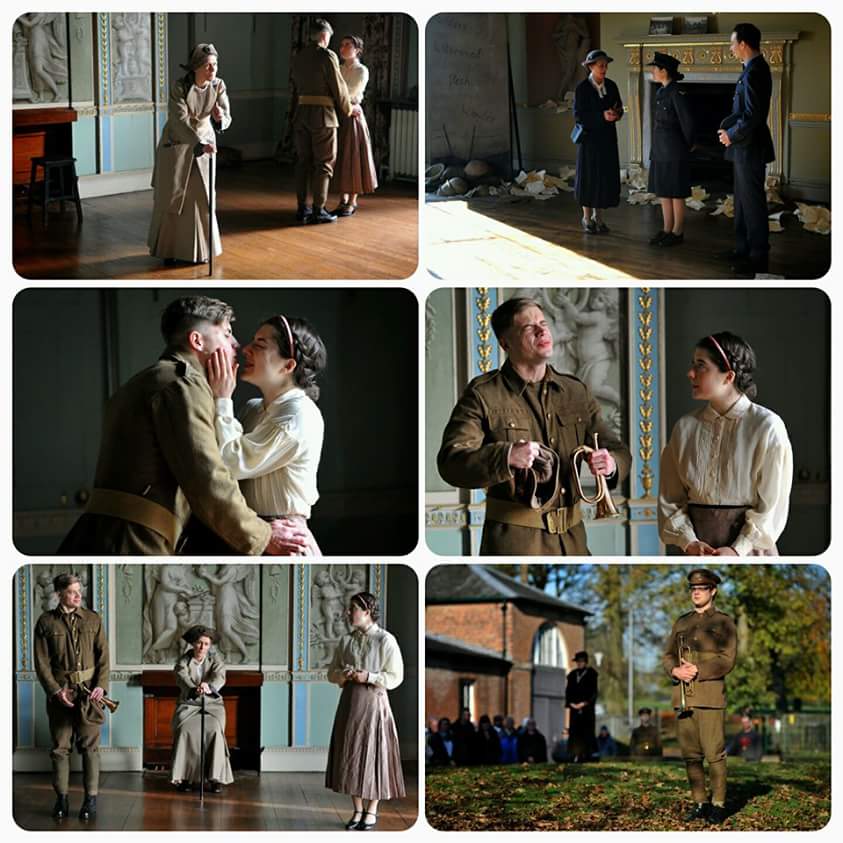
Heaton Hall was built in the late 18th century by James Wyatt, and features a wonderful music room and organ by Samuel Green (1790). It has been owned by Manchester City Council since 1904. The house and park served as headquarters for the Manchester Pals regiments in WWI and hosted the RAF during WWII, as well as acting as a hospital for wounded soldiers. In recent years the house has been largely derelict, but it is now the object of major restoration efforts, and the park with its lake and bandstands remains a vibrant part of Manchester’s public culture. Whispers of Heaton, performed by Caroline’s company Feelgood Productions, included two short specially-commissioned plays (The Fight by Cathy Crabb and Lindsay Williams and The Unknown Bugler by Peter Kerry) woven together with a new dance piece (Spilled Ink by Tangled Dance Company), further dance interludes, new music by Ailis Ni Riain and early 20th-century works by Butterworth and Vaughan Williams. It began outside the hall, then moved into the house and through different rooms as the wartime histories of Heaton Park unfolded through imagined and recreated human stories. It was incredibly engaging on many levels – with my Sound Heritage hat on, I was busy noting the inventive way that music and space were being used, while at the same time I was emotionally caught up in the dramatic action. And for my own research, I was really excited to visit Heaton Hall – the music room and organ case, probably painted by Biaggio Rebecca, figure in a chapter I am working on for my next book, and I had been hoping to go there for ages. The house is rarely open to the public, so having the chance to see inside AND experience a wonderful piece of theatre as well was the icing on the cake.
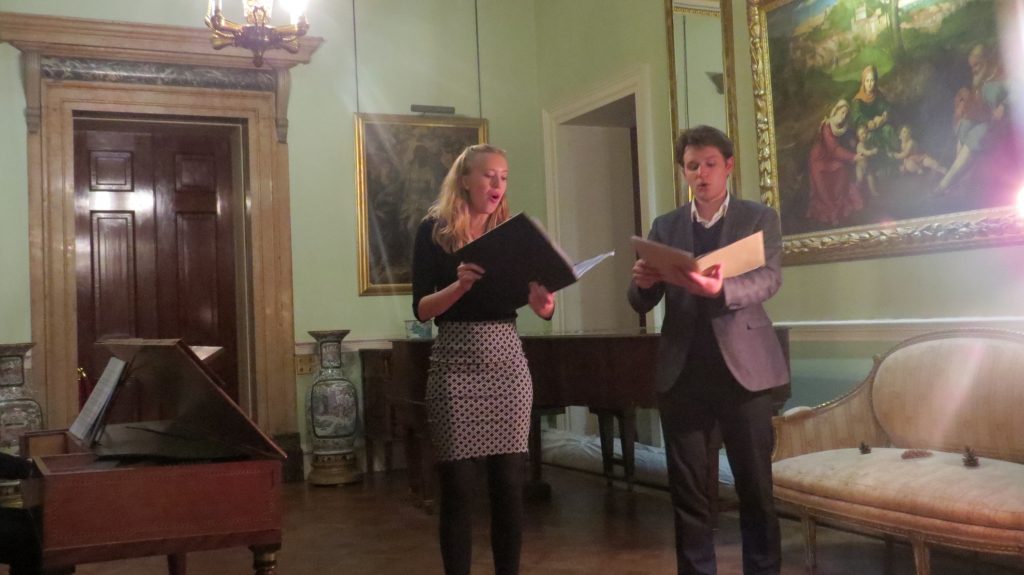
The following day we headed out to Tatton Park for a day of presentations, discussions and performance. We were joined by the vocal students from the RNCM, who had spent the previous day workshopping repertoire from Tatton’s magnificant library. We heard glees, duets, Italian arias and English songs, all using the ornamentation and other performance markings in the scores created by Elizabeth Sykes in the late 18th century. We had a useful discussion afterwards with the singers about the unfamiliar music and performance surroundings and what they had found challenging and interesting about the exercise. The RNCM group was able to join us for a tour of the house, which allowed us to show them the original sources for the music they had been working on – Carolyn Latham and the fantastic Tatton house team set up a table in the Library so that the students and Sound Heritage members could examine some of the most interesting sources.
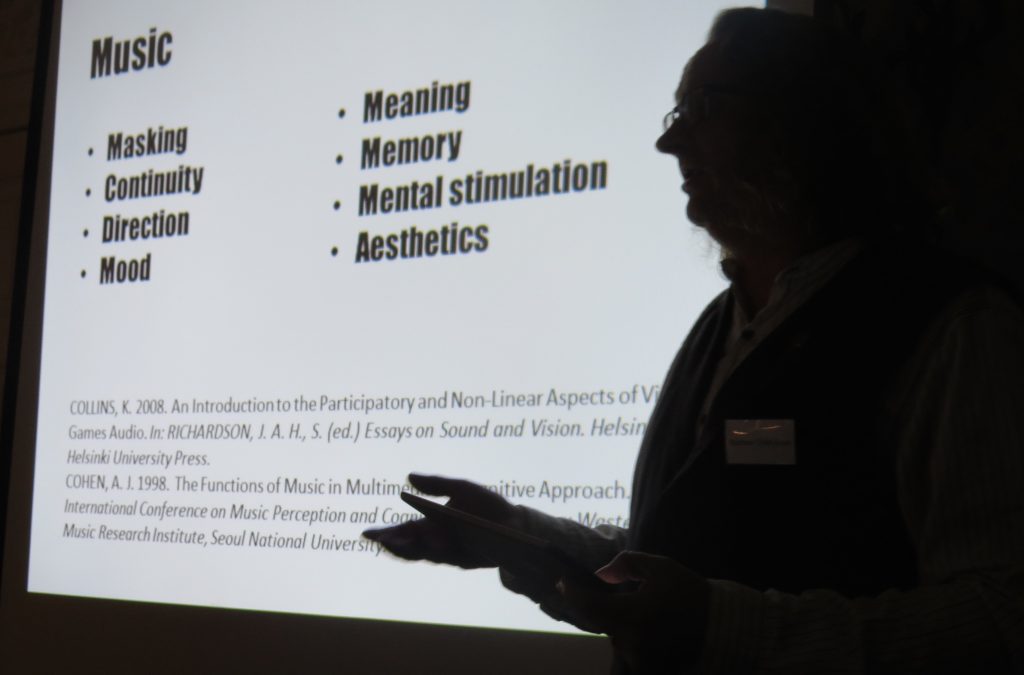
Before the informal concert, we had a morning of contrasting presentations. Dr Candace Bailey provided a fascinating glimpse at musical sources associated with the antebellum Aiken-Rhett House in Charleston, South Carolina. Descended from Huguenots, the Aiken family were very conscious of their French roots and cultivated a distinct Francophile profile within the wealthy East Coast social scene. They made frequent, and often very long, visits to Europe where they purchased the most up-to-date English and French repertoire, preserved in the binder’s volumes of their library. Matthew Tyler-Jones followed with a talk about his research on gaming, narrative and cultural heritage and how music fits in. Like film (from which many of the techniques originate), games use music in a range of sophisticated ways, to provide continuity, direct attention, and provide mood and affective colour; but these uses are largely ignored in heritage applications. Outside the musical museum sector, music sometimes figures as an aesthetic component but is rarely displayed historically, even if the music has a historical connection with the site or collection. Matthew’s blog gives a fuller explanation, and outlines plans for an experiment at Chawton House Library in the spring where he will pilot using music in a new kind of visitor experience based on interactive gaming principles.
Our afternoon was spent on Sound Heritage business: updates on a range of projects – including a music census for the York Country House Partnership, the Dowling Songbook Project, new Sound Heritage social media activity on Facebook and Twitter – and future planning. A full report will shortly be posted on the Sound Heritage website.
Tatton Park was the focus of some of the earliest research that I and Southampton postgraduates did on country house music, and with the support of the National Trust and Cheshire East Council, it hosted some of our first attempts at bringing this work to the wider public. For me it was particularly interesting and useful to come back with members of the network to revisit the house and collection after lots of further thought and experience. It seems as if we have only started to scratch the surface of what can be done to bring music more fully into historical narratives and visitor experience in historic houses, and progress often feels frustratingly slow. But looking back to the very beginning of the sound heritage project makes me realise that in many ways we have come much further than I could have imagined then.